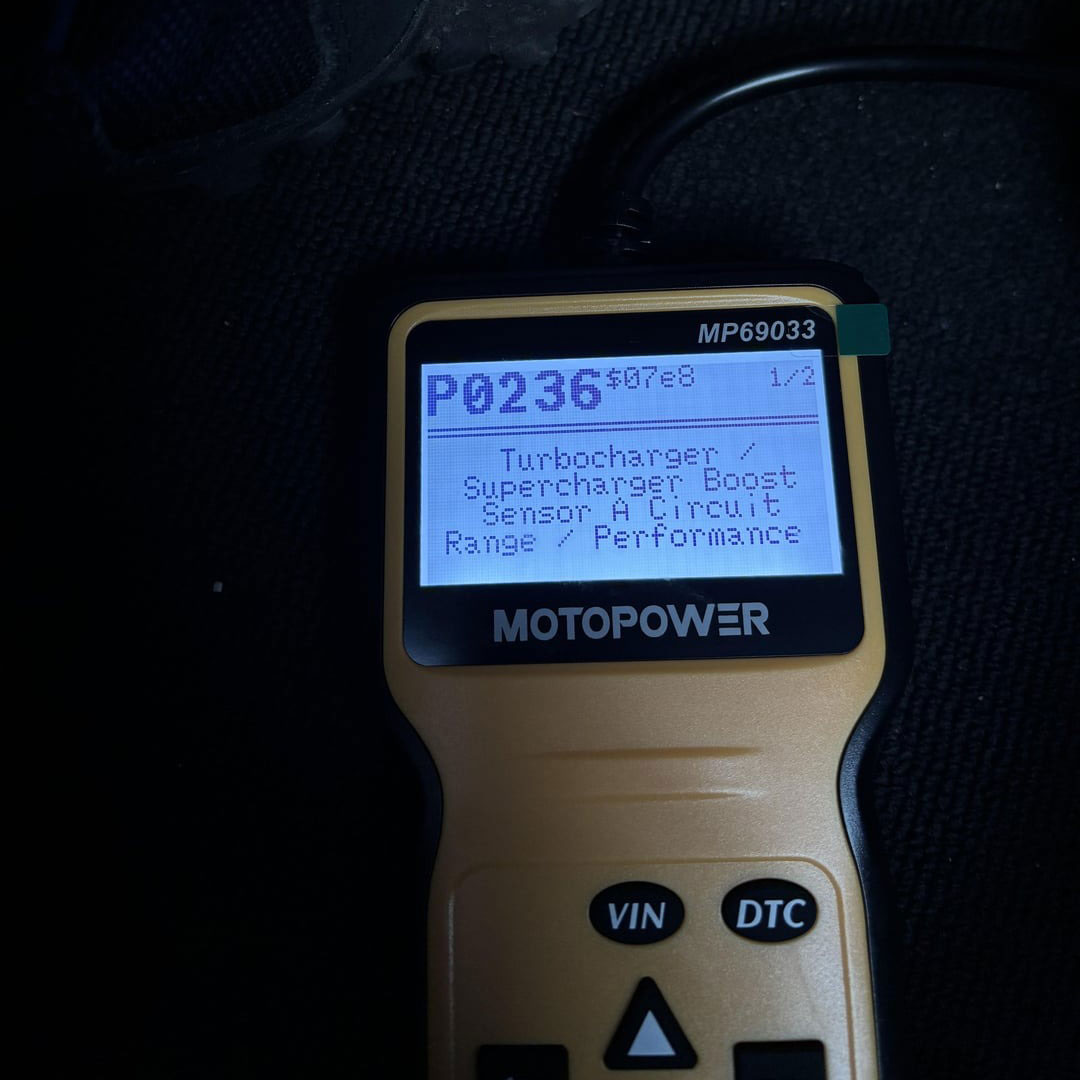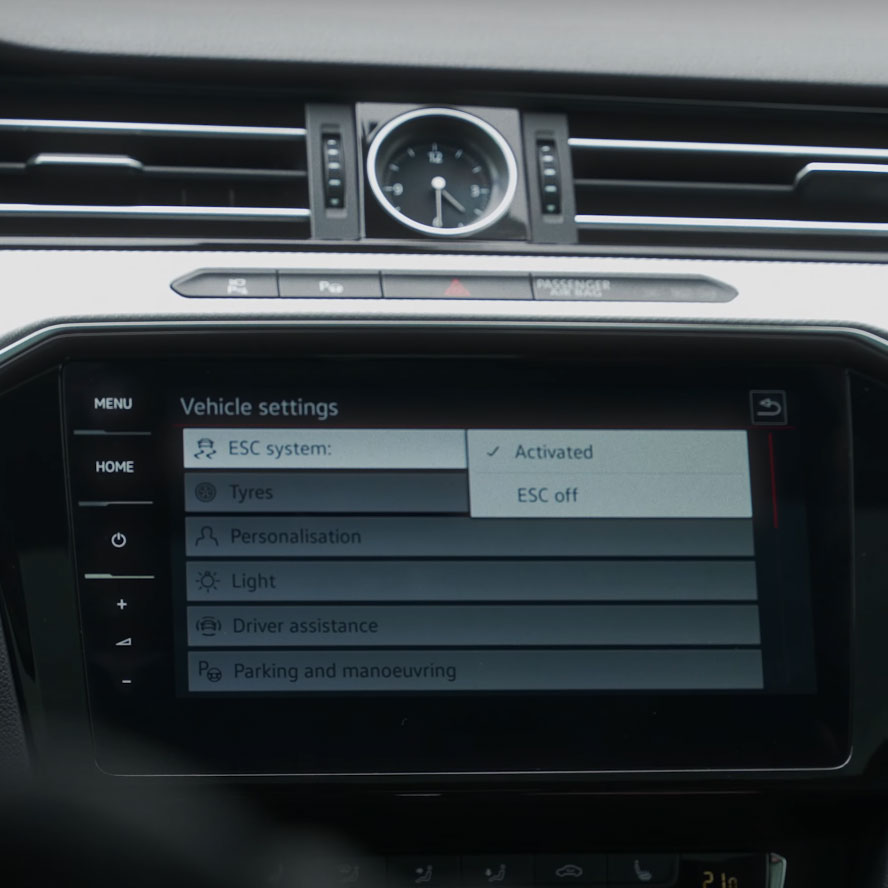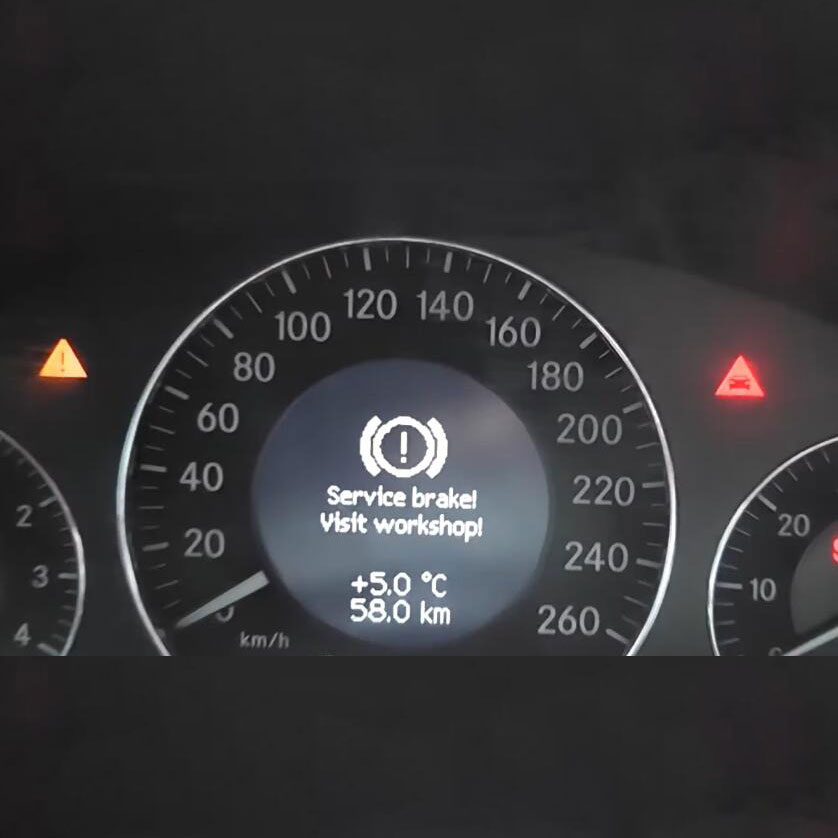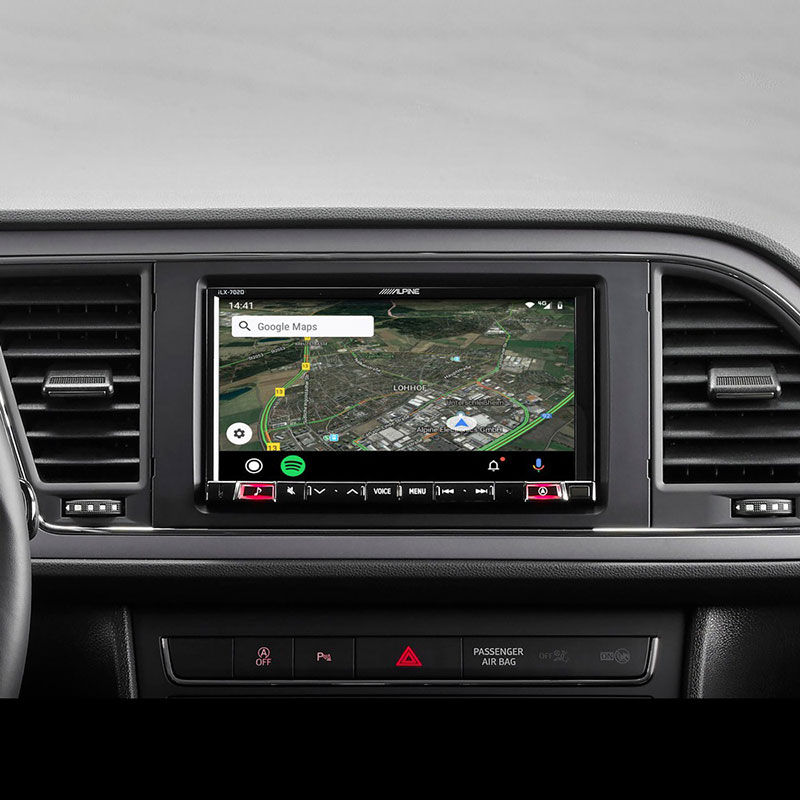

Audi Turbo Underboost Code: Diagnosis, Causes, and Solutions
Contents
The Audi Turbo Underboost Code, specifically P0299, indicates that your vehicle’s engine isn’t reaching the expected boost pressure from the turbocharger, but AutoExplain can help diagnose the root cause and get your Audi back to peak performance with expert diagnostic and coding solutions. This article dives into the causes, symptoms, and fixes for this issue, providing valuable insights for car owners, auto repair shops, and technicians alike. Understand underboost triggers, enhance diagnostic skills, and explore AutoExplain’s coding services for optimal solutions.
1. What Does the Audi Turbo Underboost Code P0299 Mean?
The Audi turbo underboost code P0299 signals that the engine control unit (ECU) detects insufficient boost pressure from the turbocharger compared to the expected level. This means the turbocharger isn’t delivering the air pressure required for optimal engine performance. According to a study by the ASE (National Institute for Automotive Service Excellence), underboost conditions can lead to reduced engine power, poor fuel economy, and potential engine damage if left unaddressed. The ECU relies on readings from the manifold absolute pressure (MAP) sensor and, in some cases, a boost pressure sensor to monitor the air intake.
To elaborate further:
- ECU Monitoring: The ECU constantly monitors the engine’s performance, including the boost pressure generated by the turbocharger.
- Boost Pressure Sensors: These sensors provide real-time data to the ECU, allowing it to adjust engine parameters for optimal performance and efficiency.
- Underboost Threshold: When the actual boost pressure falls below the pre-set threshold, the ECU triggers the P0299 code, indicating an underboost condition.
Understanding this code is the first step in diagnosing and resolving the issue, ensuring your Audi performs as intended.
2. What Causes a Turbo Underboost Condition in an Audi?
A turbo underboost condition occurs when the turbocharger fails to supply the required amount of pressurized air to the engine, stemming from a variety of mechanical and electrical issues. According to research from the University of Northwestern’s Department of Mechanical Engineering, a pressure drop of just 1-2 PSI can result in a noticeable decrease in engine performance.
Here are common causes:
- Boost Leaks: Leaks in hoses, pipes, or intercooler connections after the turbocharger but before the engine intake can cause a loss of pressure.
- Faulty Diverter Valve: A malfunctioning diverter valve can leak air, preventing the engine from reaching the desired boost level.
- Wastegate Issues: A wastegate that is stuck open or not properly controlled prevents the turbo from building adequate pressure.
- Failed Boost Pressure Regulation Valve (N75 Valve): This valve controls the wastegate; failure leads to incorrect boost pressure management.
- Turbocharger Problems: Damaged turbine wheels, worn bearings, or other internal issues can reduce the turbocharger’s efficiency.
- Sensor Malfunctions: Faulty MAP or boost pressure sensors can provide incorrect data to the ECU, leading to underboost.
- Exhaust Restrictions: A clogged catalytic converter or other exhaust restrictions can prevent the turbocharger from spinning up to the correct speed.
Identifying the specific cause requires a systematic approach, often involving visual inspections, pressure tests, and diagnostic tools.
3. What are the Common Symptoms of an Audi P0299 Code?
Several symptoms can indicate an Audi P0299 code, alerting you to a potential issue with the turbocharger system. These symptoms can range from subtle performance changes to more noticeable problems that impact drivability.
Here are key indicators:
- Reduced Engine Power: Noticeable decrease in acceleration and overall performance, especially during uphill driving or when attempting to pass.
- Poor Fuel Economy: The engine may consume more fuel than usual as it struggles to maintain performance.
- Hesitation or Stuttering: The engine may hesitate or stutter during acceleration, indicating inconsistent boost delivery.
- Check Engine Light: The check engine light illuminates on the dashboard, signaling a problem detected by the ECU.
- Limp Mode: In severe cases, the vehicle may enter limp mode, restricting engine power to prevent further damage.
- Unusual Noises: Hissing, whistling, or whining sounds from the engine bay may indicate a boost leak or turbocharger issue.
- Rough Idling: The engine may idle roughly, especially when cold.
Recognizing these symptoms early can help you address the issue promptly, preventing potential damage to the engine and turbocharger system.
4. How to Diagnose the Audi P0299 Turbo Underboost Code: A Step-by-Step Guide
Diagnosing the Audi P0299 turbo underboost code involves a systematic approach to pinpoint the root cause. Here’s a step-by-step guide to help you troubleshoot the issue effectively:
Step 1: Preliminary Checks
- Visual Inspection: Check all vacuum lines, hoses, and intercooler connections for cracks, leaks, or damage.
- OBD-II Scan: Use an OBD-II scanner to confirm the P0299 code and check for any other related fault codes.
- Review Freeze Frame Data: Examine the freeze frame data from the scanner to understand the conditions when the code was triggered.
Step 2: Boost Leak Testing
- Pressure Test: Use a boost leak tester to pressurize the intake system and listen for air leaks. Spray soapy water on connections to identify leaks easily.
- Smoke Test: Introduce smoke into the intake system to visually identify leaks, especially useful for hard-to-reach areas.
Step 3: Component Testing
- Diverter Valve: Inspect the diverter valve for tears or damage. Test its operation by applying vacuum and checking for proper sealing.
- Wastegate: Check the wastegate actuator for free movement and proper operation. Use a vacuum pump to test the actuator’s response.
- N75 Valve: Test the N75 valve’s electrical connections and operation using a multimeter and vacuum pump.
Step 4: Sensor Evaluation
- MAP Sensor: Check the MAP sensor’s readings with a scan tool. Compare the readings to the manufacturer’s specifications.
- Boost Pressure Sensor: Similar to the MAP sensor, verify the boost pressure sensor’s accuracy with a scan tool.
Step 5: Turbocharger Inspection
- Visual Inspection: Look for signs of damage, oil leaks, or excessive wear on the turbocharger.
- Shaft Play: Check the turbocharger shaft for excessive play, which can indicate worn bearings.
Step 6: Exhaust System Check
- Backpressure Test: Perform an exhaust backpressure test to identify any restrictions, such as a clogged catalytic converter.
Step 7: ECU and Wiring Assessment
- Wiring Inspection: Check the wiring and connectors to the sensors and valves for damage, corrosion, or loose connections.
- ECU Diagnostics: In some cases, the ECU itself may be the issue. Consult with a professional for ECU diagnostics and possible reprogramming.
By following these steps, you can systematically diagnose the Audi P0299 turbo underboost code and identify the necessary repairs. AutoExplain offers advanced diagnostic tools and coding services to assist with more complex issues, ensuring accurate and effective solutions.
5. What Tools Are Needed to Diagnose an Audi P0299 Code?
Diagnosing an Audi P0299 code effectively requires a range of specialized tools to pinpoint the source of the underboost condition. Having the right equipment ensures accurate diagnostics and efficient repairs.
Here’s a list of essential tools:
| Tool | Description | Use Case |
|---|---|---|
| OBD-II Scanner | Reads and clears diagnostic trouble codes, views live data, and retrieves freeze frame information. | Confirming the P0299 code, checking related codes, and analyzing conditions when the code was triggered. |
| Boost Leak Tester | Pressurizes the intake system to identify air leaks. | Locating leaks in hoses, pipes, intercooler connections, and other components. |
| Smoke Machine | Introduces smoke into the intake system to visually detect leaks, especially in hard-to-reach areas. | Identifying small or hidden leaks that are difficult to find with a pressure test alone. |
| Multimeter | Measures voltage, current, and resistance to test electrical components. | Testing the electrical connections and operation of sensors, valves, and actuators. |
| Vacuum Pump | Applies vacuum to test the operation of vacuum-controlled components. | Testing the diverter valve, wastegate actuator, and N75 valve. |
| Pressure Gauge | Measures pressure to check the performance of the turbocharger and exhaust system. | Monitoring boost pressure and performing exhaust backpressure tests. |
| Inspection Mirror | Allows visual inspection of hard-to-reach areas. | Inspecting hoses, connections, and components in tight spaces. |
| Mechanic’s Stethoscope | Helps to listen for air leaks or unusual noises from specific components. | Pinpointing the exact location of air leaks and identifying potential turbocharger issues. |
| Wiring Diagram | Provides a detailed layout of the vehicle’s electrical system. | Tracing wiring and identifying potential electrical issues. |
| Laptop with Diagnostic Software | Advanced diagnostic software for in-depth analysis and ECU reprogramming. | Performing advanced diagnostics, reading live data, and potentially reprogramming the ECU. |
Having these tools on hand will greatly enhance your ability to diagnose and repair Audi P0299 codes, ensuring efficient and accurate service. AutoExplain provides access to advanced diagnostic tools and expert coding services to further assist with complex issues, optimizing your diagnostic capabilities.
6. What is the Easiest Way to Fix a P0299 Code on an Audi?
The easiest way to fix a P0299 code on an Audi depends on the underlying cause, but starting with the most common and straightforward issues can save time and effort.
Here’s a breakdown of the easiest fixes:
- Check and Tighten Loose Connections: Inspect all intake and turbocharger hoses for loose clamps or connections. Tighten any that are loose to ensure a proper seal.
- Inspect for Obvious Leaks: Visually inspect hoses and intercooler connections for cracks or damage. Replace any damaged components immediately.
- Replace a Faulty Diverter Valve: A common cause of P0299 codes in Audis is a torn or damaged diverter valve. Replacing it is relatively simple and can often resolve the issue.
- Clean or Replace a Dirty Air Filter: A clogged air filter can restrict airflow to the turbocharger, causing underboost. Cleaning or replacing it can improve performance.
If these simple fixes don’t resolve the issue, further diagnostics are needed to pinpoint the root cause. AutoExplain offers advanced diagnostic tools and coding services to help identify and resolve more complex problems efficiently.
7. Can a Faulty Sensor Cause an Audi P0299 Code?
Yes, a faulty sensor can indeed cause an Audi P0299 code. The engine control unit (ECU) relies on accurate readings from various sensors to manage the turbocharger system effectively. If a sensor provides incorrect data, it can lead to an underboost condition and trigger the P0299 code.
Here are the key sensors involved:
- Manifold Absolute Pressure (MAP) Sensor: This sensor measures the pressure in the intake manifold, providing crucial data to the ECU for calculating boost levels. A faulty MAP sensor can give incorrect readings, leading the ECU to believe the boost is lower than it actually is.
- Boost Pressure Sensor: Located in the intake system, this sensor directly measures the boost pressure generated by the turbocharger. A malfunctioning boost pressure sensor can provide inaccurate data, causing the ECU to mismanage the turbocharger.
If either of these sensors is faulty, the ECU may not be able to correctly adjust the turbocharger’s operation, resulting in an underboost condition.
8. Can a Clogged Air Filter Cause an Audi P0299 Code?
Yes, a clogged air filter can contribute to an Audi P0299 code. The air filter’s primary function is to prevent dirt and debris from entering the engine. When the air filter becomes clogged, it restricts the amount of air that can reach the turbocharger, leading to several issues:
- Reduced Airflow: A clogged filter reduces the overall airflow to the engine, limiting the amount of air available for combustion.
- Turbocharger Strain: The turbocharger has to work harder to draw air through the restricted filter, reducing its efficiency and potentially causing damage over time.
- Underboost Condition: The reduced airflow can prevent the turbocharger from reaching its target boost level, triggering the P0299 code.
To prevent this issue, regularly inspect and replace the air filter according to the manufacturer’s recommendations.
9. How Does a Faulty Wastegate Cause an Audi P0299 Code?
A faulty wastegate can cause an Audi P0299 code by disrupting the turbocharger’s ability to regulate boost pressure effectively. The wastegate controls the amount of exhaust gas that bypasses the turbine, managing the turbocharger’s speed and boost output.
Here’s how a faulty wastegate can lead to an underboost condition:
- Stuck Open: If the wastegate is stuck open, exhaust gas bypasses the turbine, preventing the turbocharger from building sufficient boost pressure.
- Improper Adjustment: If the wastegate is not properly adjusted, it may open too early, limiting the boost pressure that can be achieved.
- Damaged Actuator: A damaged or malfunctioning wastegate actuator can prevent the wastegate from closing properly, leading to a loss of boost pressure.
10. Can AutoExplain Assist with Diagnosing and Fixing an Audi P0299 Code?
Yes, AutoExplain can significantly assist with diagnosing and fixing an Audi P0299 code. AutoExplain specializes in providing advanced diagnostic tools and coding solutions for automotive issues, particularly those related to complex systems like turbochargers and engine management.
Here’s how AutoExplain can help:
- Advanced Diagnostic Tools: AutoExplain offers state-of-the-art diagnostic tools that can accurately identify the root cause of the P0299 code, whether it’s a sensor issue, a boost leak, or a turbocharger problem.
- Expert Coding Services: AutoExplain’s coding services can address software-related issues that may be contributing to the underboost condition, ensuring that the ECU is properly calibrated for optimal performance.
- Remote Support: AutoExplain provides remote diagnostic and programming support, allowing technicians to access expert assistance from anywhere.
By leveraging AutoExplain’s tools and services, you can streamline the diagnostic process, identify the exact cause of the P0299 code, and implement effective solutions to restore your Audi’s performance.
11. What Role Does Coding Play in Resolving an Audi P0299 Turbo Underboost Code?
Coding plays a crucial role in resolving an Audi P0299 turbo underboost code, particularly when the issue stems from software or calibration discrepancies within the engine control unit (ECU). Modern vehicles rely heavily on software to manage various systems, including the turbocharger. Coding ensures that all components work together seamlessly and that the ECU is properly calibrated for optimal performance.
Here’s how coding can help:
- ECU Recalibration: Coding can recalibrate the ECU to optimize boost pressure settings, fuel delivery, and other parameters that affect turbocharger performance.
- Software Updates: Applying the latest software updates can address known issues and improve the overall performance of the engine management system.
- Component Integration: Coding can ensure that newly installed components, such as sensors or actuators, are properly integrated into the vehicle’s system.
12. What are the Benefits of Using AutoExplain’s Coding Services for Audi Turbo Issues?
Using AutoExplain’s coding services for Audi turbo issues offers several significant benefits, ensuring efficient and effective solutions for your vehicle.
Here are the key advantages:
- Expertise and Experience: AutoExplain specializes in coding and programming for a wide range of vehicles, including Audis. Their team of experts has extensive experience in diagnosing and resolving complex turbocharger issues.
- Advanced Technology: AutoExplain utilizes state-of-the-art coding tools and software to accurately recalibrate the ECU and optimize turbocharger performance.
- Remote Support: AutoExplain provides remote coding services, allowing you to access expert assistance from anywhere. This eliminates the need to transport your vehicle to a specialized shop.
- Customized Solutions: AutoExplain offers customized coding solutions tailored to your specific vehicle and driving needs, ensuring optimal performance and efficiency.
- Cost Savings: By accurately diagnosing and resolving turbo issues through coding, AutoExplain can help you avoid costly repairs and replacements.
- Time Efficiency: AutoExplain’s remote coding services can often be completed in a fraction of the time compared to traditional repair methods.
13. What Specific Coding Solutions Does AutoExplain Offer for Turbo Underboost Issues?
AutoExplain offers a range of specific coding solutions designed to address turbo underboost issues in Audi vehicles. These solutions are tailored to diagnose and resolve software-related problems that may be contributing to the underboost condition.
Here are some key coding solutions:
- ECU Recalibration: AutoExplain can recalibrate the ECU to optimize boost pressure settings, fuel delivery, and other parameters that affect turbocharger performance. This ensures that the turbocharger operates within the correct specifications.
- Software Updates: AutoExplain can apply the latest software updates to the ECU, addressing known issues and improving the overall performance of the engine management system.
- Component Integration: When new sensors or actuators are installed, AutoExplain can code them to ensure they are properly integrated into the vehicle’s system. This ensures that the components communicate effectively with the ECU.
- Performance Tuning: AutoExplain can perform performance tuning to enhance the turbocharger’s output, improving overall engine performance and responsiveness.
- Diagnostic Coding: AutoExplain can use coding to run advanced diagnostics on the turbocharger system, identifying hidden issues that may not be apparent through traditional methods.
- Fault Code Clearing: After addressing the underlying issue, AutoExplain can clear fault codes from the ECU, ensuring that the check engine light is turned off.
14. How Can AutoExplain’s Remote Coding Services Save Time and Money on Audi Repairs?
AutoExplain’s remote coding services offer significant time and cost savings on Audi repairs, particularly for complex issues like turbo underboost conditions. By leveraging advanced technology and expert knowledge, AutoExplain streamlines the diagnostic and repair process, minimizing downtime and reducing overall expenses.
Here’s how AutoExplain’s remote coding services save time:
- Eliminates Transportation: With remote coding, you don’t need to transport your vehicle to a specialized repair shop. This saves you time and eliminates transportation costs.
- Faster Diagnostics: AutoExplain’s remote diagnostic tools can quickly identify the root cause of the issue, reducing the time spent on troubleshooting.
- Efficient Repairs: Remote coding allows for immediate implementation of solutions, minimizing the time your vehicle is out of service.
Here’s how AutoExplain’s remote coding services save money:
- Reduced Labor Costs: Remote coding requires less labor compared to traditional repair methods, resulting in lower labor costs.
- Avoids Unnecessary Repairs: Accurate diagnostics prevent unnecessary repairs, ensuring that you only pay for the services you need.
- Prevents Further Damage: Addressing issues promptly through coding can prevent further damage to the engine and turbocharger system, saving you from more costly repairs down the line.
15. What Equipment Do I Need to Use AutoExplain’s Remote Coding Services?
To effectively utilize AutoExplain’s remote coding services, you will need a few key pieces of equipment to ensure a seamless and successful diagnostic and repair process.
Here’s a list of the necessary equipment:
- Laptop with Stable Internet Connection: A laptop is essential for running the diagnostic software and communicating with AutoExplain’s remote technicians. A stable internet connection is crucial for uninterrupted data transfer and real-time support.
- OBD-II Diagnostic Interface: An OBD-II diagnostic interface is required to connect your laptop to the vehicle’s diagnostic port. This interface allows the diagnostic software to communicate with the vehicle’s ECU.
- Battery Charger/Maintainer: A battery charger or maintainer is recommended to ensure that the vehicle’s battery does not drain during the coding process. Coding can take some time, and a stable power supply is essential to prevent errors.
- AutoExplain Diagnostic Software: You will need to install AutoExplain’s diagnostic software on your laptop. This software is specifically designed to work with AutoExplain’s remote coding services.
16. How Secure is AutoExplain’s Remote Coding Process for My Audi?
AutoExplain prioritizes the security of its remote coding process to ensure the safety and integrity of your Audi’s software and data. Implementing robust security measures protects against unauthorized access and potential cyber threats.
Here are the key security measures AutoExplain employs:
- Encrypted Data Transmission: All data transmitted during the remote coding process is encrypted using advanced encryption protocols. This prevents unauthorized interception and ensures that your vehicle’s data remains confidential.
- Secure Access Protocols: AutoExplain utilizes secure access protocols to verify the identity of technicians and prevent unauthorized access to your vehicle’s ECU.
- Firewall Protection: AutoExplain’s systems are protected by firewalls that block unauthorized access and prevent malicious attacks.
- Regular Security Audits: AutoExplain conducts regular security audits to identify and address potential vulnerabilities in its systems.
- Data Backup and Recovery: AutoExplain maintains regular backups of all data to ensure that it can be quickly recovered in the event of a system failure or security breach.
17. Can AutoExplain Help with Coding After Replacing a Turbocharger on an Audi?
Yes, AutoExplain can provide valuable assistance with coding after replacing a turbocharger on an Audi. After replacing a turbocharger, coding is often necessary to ensure that the new turbocharger is properly integrated with the vehicle’s engine management system.
Here’s how AutoExplain can help with coding after a turbocharger replacement:
- ECU Recalibration: AutoExplain can recalibrate the ECU to optimize boost pressure settings and fuel delivery for the new turbocharger. This ensures that the engine operates within the correct specifications and achieves optimal performance.
- Component Integration: AutoExplain can code the new turbocharger components to ensure they are properly integrated into the vehicle’s system. This ensures that the components communicate effectively with the ECU and that all systems function harmoniously.
- Performance Tuning: AutoExplain can perform performance tuning to enhance the turbocharger’s output, improving overall engine performance and responsiveness.
- Fault Code Clearing: After completing the coding process, AutoExplain can clear any fault codes from the ECU, ensuring that the check engine light is turned off.
18. What is the Cost of AutoExplain’s Coding Services for an Audi P0299 Code?
The cost of AutoExplain’s coding services for an Audi P0299 code can vary depending on the specific services required to resolve the issue. Several factors influence the cost, including the complexity of the problem, the amount of time required for coding, and any additional services needed.
To provide a general idea, here are some potential cost factors:
- Diagnostic Services: The initial diagnostic assessment to identify the root cause of the P0299 code may incur a separate fee.
- ECU Recalibration: Recalibrating the ECU to optimize boost pressure settings and fuel delivery typically ranges from $200 to $500.
- Software Updates: Applying the latest software updates to the ECU may cost between $100 and $300.
- Component Integration: Coding new components to ensure they are properly integrated into the vehicle’s system can range from $150 to $400.
- Performance Tuning: Performance tuning to enhance the turbocharger’s output may cost between $300 and $600.
For a precise estimate, it is best to contact AutoExplain directly with details about your Audi and the specific symptoms you are experiencing.
19. How Do I Schedule a Remote Coding Session with AutoExplain for My Audi?
Scheduling a remote coding session with AutoExplain for your Audi is a straightforward process designed to provide you with expert assistance quickly and efficiently.
Here are the steps to schedule a remote coding session:
- Contact AutoExplain: Reach out to AutoExplain via their website (autoexplain.com), email ([email protected]), or WhatsApp (+1(936)2896695). You can also visit their location at 1500 N Grant ST Sten Denver, Colorado, United States.
- Provide Vehicle Information: Provide detailed information about your Audi, including the year, model, and specific issues you are experiencing.
- Describe the Symptoms: Clearly describe the symptoms related to the P0299 code, such as reduced engine power, poor fuel economy, or unusual noises.
- Discuss Diagnostic Steps: Discuss any diagnostic steps you have already taken and share any relevant diagnostic trouble codes (DTCs).
- Schedule a Session: Coordinate a convenient time for the remote coding session. AutoExplain will provide instructions on how to prepare for the session.
- Prepare Your Equipment: Ensure you have the necessary equipment, including a laptop with a stable internet connection, an OBD-II diagnostic interface, and a battery charger/maintainer.
- Connect with AutoExplain: At the scheduled time, connect with AutoExplain’s remote technicians using the provided instructions. They will guide you through the coding process and provide expert assistance every step of the way.
20. What Kind of Warranty or Guarantee Does AutoExplain Offer on Their Coding Services?
AutoExplain stands behind the quality and effectiveness of its coding services by offering a warranty or guarantee to ensure customer satisfaction. The specific terms of the warranty or guarantee may vary depending on the nature of the coding service and the specific issues being addressed.
Here are some common types of warranties or guarantees that AutoExplain may offer:
- Service Guarantee: AutoExplain may offer a guarantee that the coding service will resolve the specific issue being addressed. If the issue persists after the coding service, AutoExplain will provide additional support or a refund.
- Warranty on Workmanship: AutoExplain may offer a warranty on the workmanship of its coding services, ensuring that the coding is performed correctly and meets industry standards.
- Software Warranty: AutoExplain may offer a warranty on the software or coding files used during the service, ensuring that they are free from defects and compatible with your vehicle.
To get detailed information about AutoExplain’s warranty or guarantee on coding services for an Audi P0299 code, it is best to contact AutoExplain directly.
Conclusion:
Experiencing an Audi turbo underboost code can be frustrating, but understanding the causes, symptoms, and diagnostic steps is crucial for effective resolution. AutoExplain offers advanced diagnostic tools and expert coding services to streamline the repair process, saving you time and money. Whether you need ECU recalibration, software updates, or component integration, AutoExplain provides customized solutions tailored to your specific vehicle. Contact AutoExplain today via their website autoexplain.com, email AutoExplain[email protected], or WhatsApp (+1(936)2896695) to schedule a remote coding session and restore your Audi’s optimal performance. Their location is 1500 N Grant ST Sten Denver, Colorado, United States.
 VW GTI Charge pipes
VW GTI Charge pipes


How to Deactivate ESC in Volkswagen, Audi, Skoda, or SEAT

Mercedes Benz ‘Service Brake Visit Workshop’ Warning? Here’s What Dealers Don’t Tell You!

How to Perform Seat Navigation Update? – A Comprehensive Guide for Technicians






